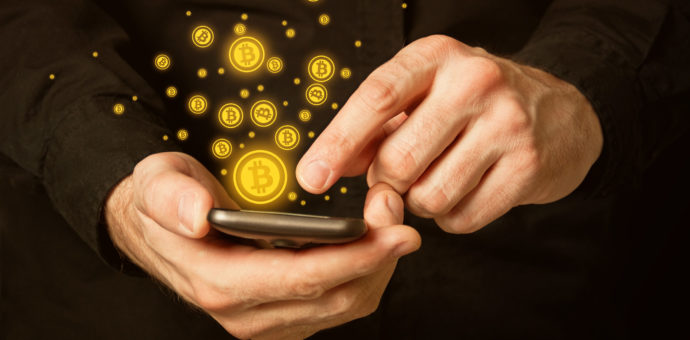Do you know how the process of sending and receiving bitcoins works? As we´ve showed previously, in order to make a transaction in bitcoins you need a portfolio or bitcoins wallet. Thus, an individual transfer the bitcoins to another person without the need of an intermediary. And the transaction is validated by computers at the blockchain. Check out this step by step prepared by the channel Crypto Economía.
1º step of a transaction with bitcoin: signature
For purposes of performing the process of sending and receiving bitcoins, three steps are needed. The first of these is the signature. It works as follows: by the time you send an amount from a bitcoins portfolio, it is necessary to identify the sender.
In response to the request, the portfolio creates a transaction message that contains information about the recipient, the sender and the sent value. Then, the portfolio generates a unique digital signature to this transaction message, blending it mathematically with the private key of the sender. This is a long string of letters and numbers that act as the “password” to manage the bitcoins.
Thus, a digital signature is a way to prove that the owners actually possess the private key of their bitcoins. In addition, digital signatures are different each time a transaction is performed, and that´s why they are still safer than a real signature.
2º step: diffusion/dissemination
The next stage is the diffusion. In this step, the bitcoin portfolio starts to send the file with the transaction message to other computers on the bitcoin network. These computers are called nodes and each of them that receive the file checks whether it is legitimate.
Basically, each node verifies if the bitcoins which are being sent are available in the account. They also check if the signature matches to that bitcoins’owner. This procedure is similar to what the bank does before cashing a check or making a wire transfer.
Once the node has verified the transaction file as valid, it passes to other nodes on the network who will repeat this process. That´s the reason this stage is called as diffusion.
When a node receives a file, it keeps it in a waiting area called Mempool. This is a space dedicated to valid transactions, but not yet confirmed. Once the transaction message reaches the Mempool of the different nodes connected to bitcoins network, it can be said that the transmission is officially concluded.
3ºstep: confirmation
In this step, the miners take the files that are in the Mempool, group them together and create a transaction block. There is a limit on the number of transactions that can be inserted in each block. Therefore, the miners usually choose the transactions that have the highest fees first.
Usually, the bitcoins portfolio calculate automatically the fee which should be paid by a transaction. They are made based on the current volume of accumulated transactions in the database. But the bitcoins portfolios also allow a higher fee to be defined, distinctive from the automatic average. This can be done if the sender wishes the transaction to be confirmed asap. The miners compete among themselves to include the block on the blockchain. Once the block is on the blockchain, all transactions that were on that block will be considered confirmed. On average, a new transaction block will be extracted or inserted in the blockchain every 10 minutes. Finally, the process is concluded. The transaction is now fully confirmed and received.







